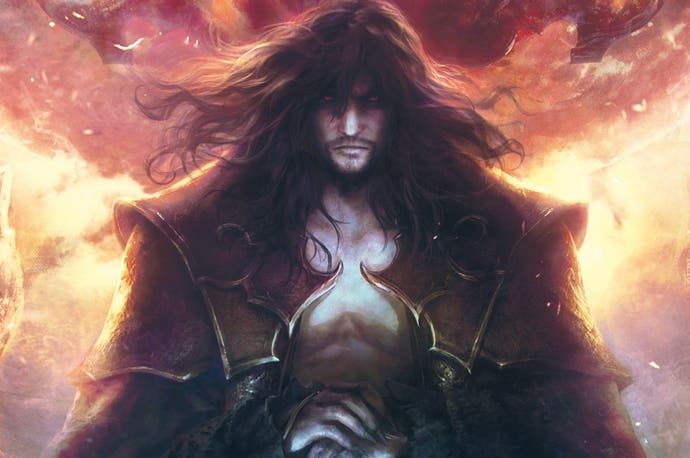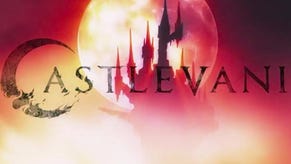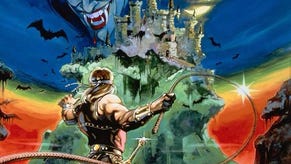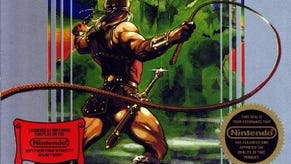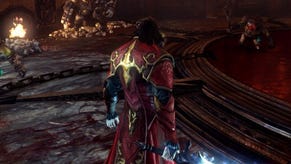Face-Off: Castlevania: Lords of Shadow 2
PC takes on Xbox 360 and PlayStation 3.
Never short on spectacle, the original Lords of Shadow showcased detail-rich environments, hulking boss battles and exciting set-pieces in a technically stunning release. However, developer Mercury Steam's ambition came at a price, with the game regularly failing to hit the desired 30fps target, resulting in jerky visuals and uneven controller response that impacted gameplay. The good news is that, in technical terms, the sequel is a massive improvement.
Castlevania's return serves up a similar slice of hack-and-slash combat and a distinctly linear take on 'Metriodvania' exploration - at least during the first few hours. While the direction taken with Lords of Shadow 2 is still somewhat questionable from a gameplay perspective - with the contemporary setting and scripted stealth sections feeling distinctly out of place in a Castlevania game - Mercury Steam continues to impress from a technical one. The developer has delivered a sequel that improves upon the already impressive technology in a number of ways: elements such as a player-controlled dynamic camera better frame the action, while the continued use of lighting, particles and motion blur add intensity to large-scale battles and scripted action sequences above that of the previous game.
The results are just as accomplished on both consoles, with both versions presenting a night-and-day level of improvement in performance over the first Lords of Shadow. After the wildly variable first game, we see frame-rates regularly hitting 30fps mark in this sequel. In a balancing act of sorts, Mercury Steam makes a few changes to accommodate these improvements: notably, we see the game operating with a native 1024x720 framebuffer on both consoles, without any form of anti-aliasing, whereas the previous game runs in 720p - also without any AA.
Unsurprisingly, the drop in resolution yields a few more artefacts in the form of jaggies and some smoothing of texture details compared to a native 720p presentation, but in this case we feel that the trade-off is worthwhile in order to accommodate the increased level of spectacle. The game still appears quite sharp, and we're certainly not dealing with any overly intrusive sub-HD blurring. Of course, if you're upset about any resolution downscaling, there's also day-one availability of a zero-compromise PC version that takes you up to full HD and beyond.
Alternative comparisons:
"There's little to separate the Xbox 360 and PS3 versions of Lords of Shadow 2, but the PC game is a completely different story."
The visuals on offer in Lords of Shadow 2 are replicated to the same high standards on both 360 and the PS3, and to that end it's hard to find any meaningful differences between them, with the quality of the artwork, texture filtering and general effects all matching up. Environments such as Dracula's castle, shady industrial locations and the modern city streets, are rich in detail and feature a mix of various dynamic light sources and additional effects - light shafts, bloom and lens flare - which help to infuse atmosphere into these locations.
Unlike the previous game, the PS3 doesn't benefit from a higher-precision camera and object blur implementation this time around, with both consoles getting a noticeably low-resolution effect that displays pixellation and banding-like artefacts. Low-resolution alpha buffers are also used for other elements - such as smoke and mist - which results in jaggies and depth discontinuities appearing around geometry edges as they overlap with these effects.
On the whole, the compromises in these areas serve to make certain aspects of Lords of Shadow 2 look quite rough in places, particularly during fast-paced action scenes where we see high levels of alpha-based effects and frequent use of camera and object blur, which also throw up noticeable anomalies on screen. However, the combined use of these effects and huge set-pieces result in some spectacular scenes, with scripted environmental destruction, and boss battles that play out over multiple locations.
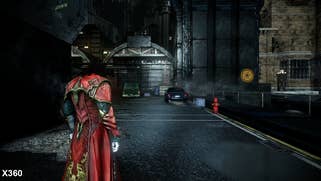
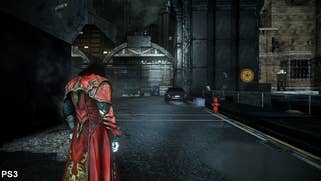
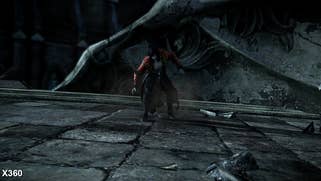
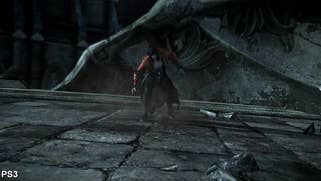
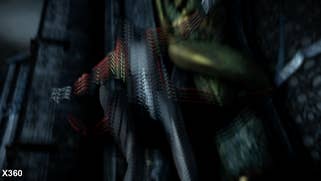
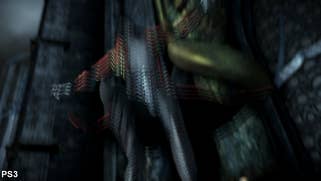
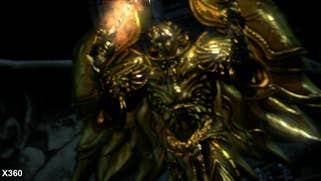

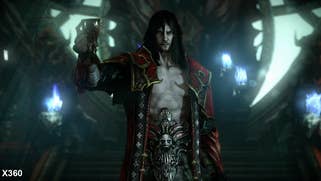
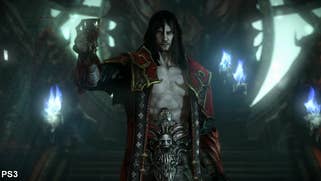
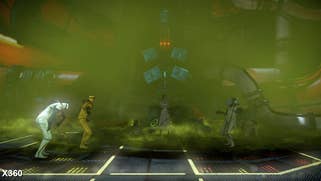

The sense of scale that Mercury Steam regularly creates is impressive in this regard, and these moments rank as some of the best the game has to offer, blending combat and cinematics into an exciting package that make some of these graphical compromises worthwhile even though they look quite unsightly at times. It's just a shame that so much of the gameplay is diverted to uninteresting puzzle-solving and stealth sequences in the first few hours of the game, which is a real comedown after the rather entertaining opening sequence featuring a fully powered-up Dracula and a combat-centric focus.
While the PC version of Lords of Shadow 2 isn't exactly state-of-the-art when held up against the likes of Crysis 3 and Battlefield 4, it's on this platform where Mercury Steam's engine really flexes its muscles without having to worry about compromising the quality of various effects in order to meet specific performance metrics. Bumping up the resolution to 1080p and applying anti-aliasing to the image automatically gives the PC game a much cleaner and crisper appearance compared to the 360 and PS3 versions.
It's not clear which edge-smoothing algorithm is at work in the PC game, but it appears to be a custom post-process form of anti-aliasing that doesn't seem to have any impact on texture quality. On the whole, coverage is pretty flaky though, with the algorithm missing out on many edges, while sub-pixel information is also left untouched, leading to some visible pixel-popping across the scene. Thankfully, the extra pixel precision afforded by the native 1080p resolution in combination with the limited AA implementation still results in a massive improvement over the console versions.
Upgrades funnel down to other areas of the game too: the use of higher-resolution textures and normal maps across clothing and various parts of the environment give these elements an extra level of depth and detail over the console release. Shadows and alpha buffers are rendered at higher resolution than the console equivalents, while depth-of-field and camera/object blur are given higher-precision implementations with fewer noticeable artefacts in motion.
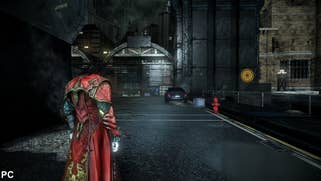

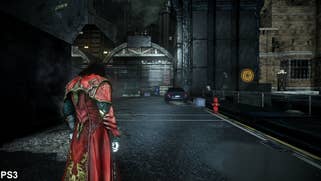

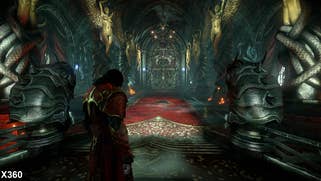
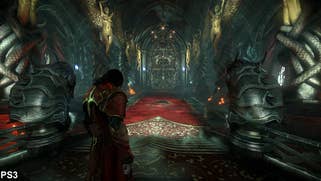
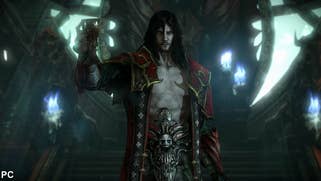

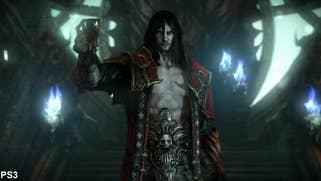
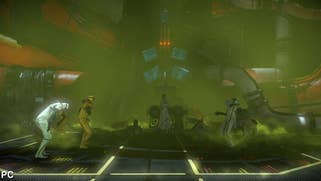
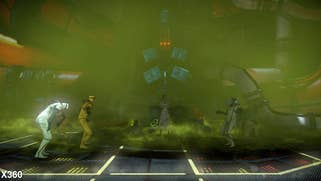

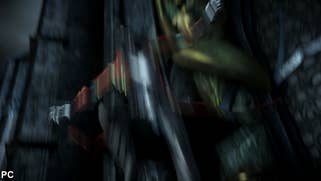
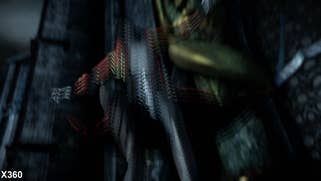
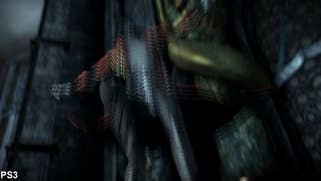


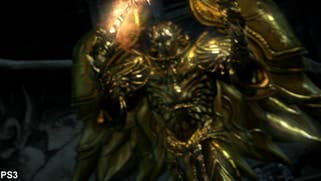
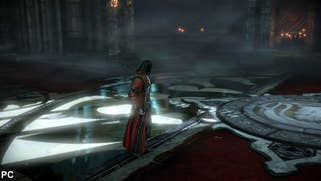
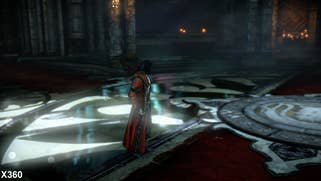
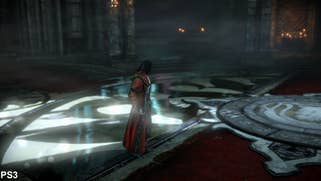
As a result of the increased level of visual fidelity on offer, these effects better enhance the cinematic-style presentation without negatively impacting on the overall look of the game in other areas. For example, there are no unsightly jaggies around polygon edges when covered with smoke and other alpha-based effects, while effects such as object blur now appear cleaner and less pixellated than on consoles.
Lords of Shadow 2: performance analysis
While the original Lords of Shadow targeted a 30fps update, it frequently fell short, resulting in some highly variable frame-rates that spent more time in the mid-to-low 20s during gameplay, causing noticeable unevenness and obtrusive latency in the controls. Cut-scenes were worse, with drops down to 15fps in some sequences creating a jerky update that pulls you away from the well-directed cinematics.
The good news is that huge strides have been made in improving this for Lords of Shadow 2, with the game now offering up gameplay at a sustained 30fps during both light exploration and heavy combat. Understandably, we're not looking at a locked frame-rate throughout a varied run of play, but instead more in the way of smaller 2-4fps drops in demanding scenes where particle effects and alpha are thrown about more liberally. Even so, the improvement over the original Lords of Shadow is quite remarkable. The newfound consistency in the controls makes combat feel far more responsive than before - it's easier to time various moves together with greater consistency - and the on-screen action is simply that much smoother.
Both consoles offer up a similar experience during gameplay too: the 360 seems to have a slightly easier time when dealing with alpha-heavy scenarios, although the PS3 is never far behind, for the most part matching Microsoft's platform with just a few more smaller drops in fluidity. In fact, judging by how the two consoles perform during identical scenes, it's possible that differences in our gameplay runs across both platforms actually account for some of these variances, since the rendering load is far from identical.
"Mercury Steam's optimisations and resolution tweakery have produced a game with a far more consistent frame-rate than its predecessor."
A look at like-for-like scenes is revealing in this regard, with the lines in our frame-rate graphs almost completely matching up through all of our test clips. There are areas where one platform features a higher frame-rate than the other - and vice versa - but it's hard to pinpoint the exact cause of the fluctuations, as both 360 and PS3 both drop in detail and effects-heavy scenes. Performance in these real-time cinematics is a definitive step up from the previous Lords of Shadow game, although with frame-rates dropping into the low 20s, it's clear that these sequences don't match up to the smoother experience found during gameplay - particularly during some of the more intense scenes where we see fast camera pans combined with layers of effects work.
While Mercury Steam's ability to deliver gameplay at 30fps is a massive improvement over its console predecessor, the ability to cut down satanic hellspawn and hulking guardians made of stone at 60fps on PC represents a significant step beyond the PS3 and 360 versions. Running at 1080p resolution and with all graphical options set to their highest amounts - including shadow quality and post-processing - our Intel Core i5 and GTX 680 set-up managed to deliver a near-constant 60fps experience throughout our capture session, with frame-rates only occasionally dropping down to around the 50fps mark in busier areas and more effect heavy sequences. Cut-scenes were also similarly stable, although the variances in performance were a little more frequent here.
Other than the obvious boost in fluidity of the visuals, the main benefit during gameplay comes with much faster response in the controls, allowing you to react more quickly in countering enemy attacks and in changing your own moves together. The extra levels of fluidity come in especially handy during some of the game's scripted sequences, where one wrong move or delayed button press results in a rather quick death. Thankfully, checkpoints appear closer together than in the first Lords of Shadow, so it's not too much of a problem, but the smoother frame-rate and better controls provided by the 60fps experience give you a increase in accuracy that makes the game much more enjoyable to play, despite a number of questionable design choices.
"A look at like-for-like engine-driven cut-scenes reveals that performance between the two console versions is uncannily similar throughout."
Castlevania: Lords of Shadow 2 - the Digital Foundry verdict
While Mercury Steam continues to impress us with its technical prowess, the developer has a little more to prove in the gameplay stakes - Lords of Shadow 2 feels distinctly uneven and a little too unfocused for its own good. We get the sense that Mercury Steam is trying to broaden out the Castlevania series with new concepts, but the developer isn't always sure how to implement them into the existing template in a way that doesn't feel forced or unnatural. The scripted stealth missions and contemporary setting feels at odds with the franchise's iconic look and feel, and only serve to create a jarring disconnect between the satisfying combat and well-directed cut-scenes.
However, from a technical perspective, it's clear that Lords of Shadow 2 represents a large improvement over the previous game. Mercury Steam has made clear choices on exactly which compromises to make in order to provide a smoother experience on console that better complements the fast-paced hack-and-slash action and large-scale set-pieces on offer in this sequel. While the use of low-resolution effects and the sub-HD framebuffer all have consequences to overall image quality, this seems like a worthwhile trade in order to deliver smoother gameplay that more closely hits the desired 30fps update so lacking in the first game. The level of platform parity is also impressive, with the 360 and PS3 both offering up the same graphical and gameplay experience throughout.
Unlike the first Lords of Shadow, both versions of this latest instalment also come on a single disc, with the increased use of real-time cut-scenes negating the need for additional storage space for large video encodes on the 360. The result is zero disc-swapping on Microsoft's system this time around and a more seamless experience overall - another plus point over the first game. In that respect both versions are equally recommended from a multi-platform perspective, with your choice perhaps centring on which system features your preferred controller.
Naturally, the ability to run at 60fps easily makes the PC game the most attractive to fans of fast-paced action titles and Lords of Shadow 2 greatly benefits from the quicker and more accurate controller response provided by the higher frame-rate. The upgrade in the quality of the art and effects work also represents a worthwhile step up over the consoles, especially when playing natively in 1080p where details appear sharper and more defined.
Whichever platform you're playing the game on, we've got a Lords of Shadow 2 walkthrough to help you through the toughest bits.
